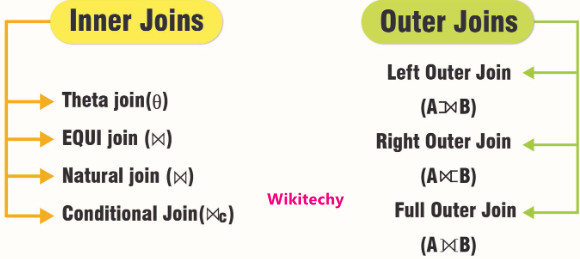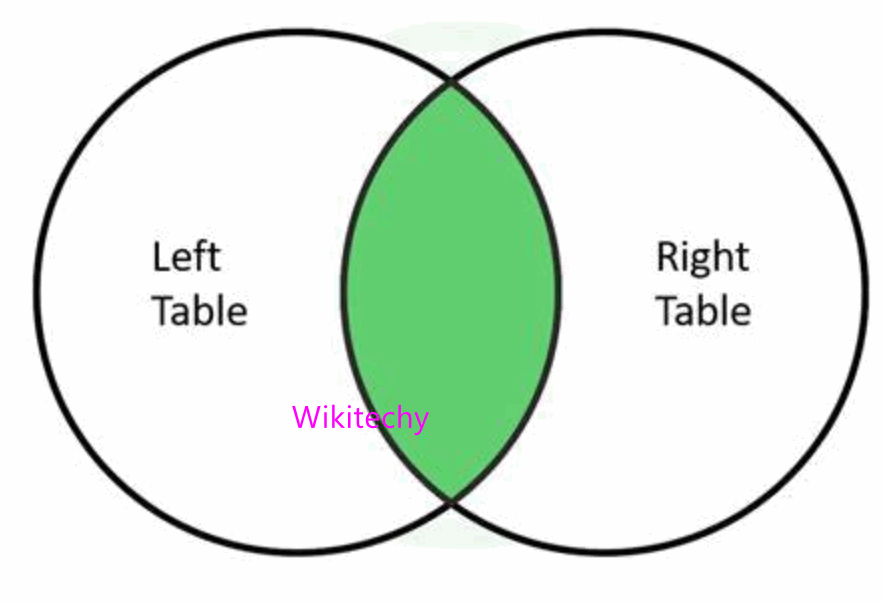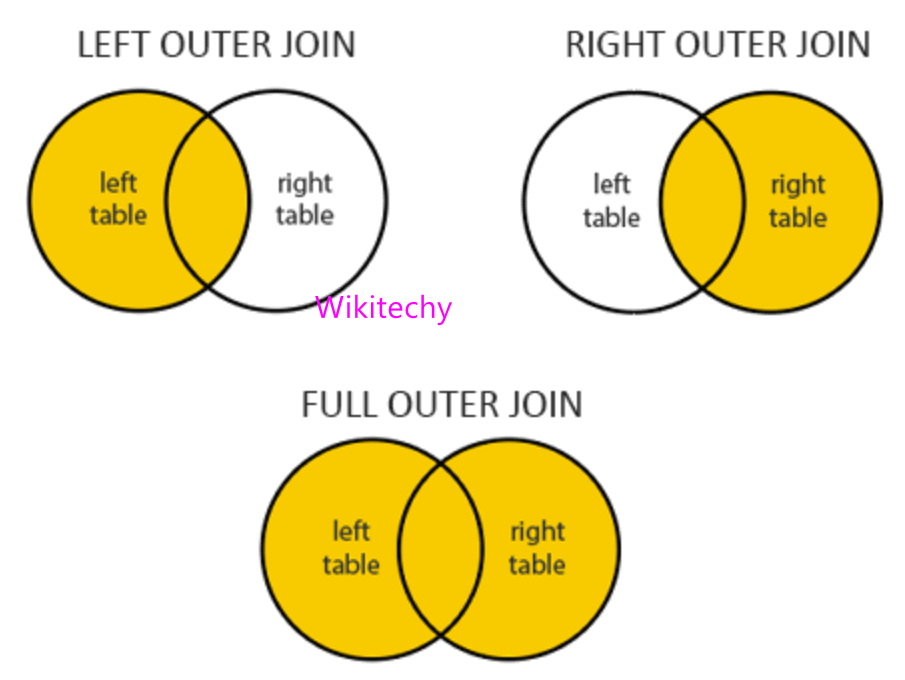
- DBMS join is a binary operation that allows to combine join product and selecting in one single statement.
- If data needs to be retrived from two or more tables we can use joins to retrieve data.
- Tables in DBMS are associated with the primary key and foreign keys.
Types of Joins:
Inner Joins: Theta, Natural, EQUI
Outer Join: Left, Right, Full
Inner Joins:

- To return rows from both tables based on a satisfying condition we can use inner join.
- It is default join type and is the most widely used join operation.
- Inner join can classified into three subtypes
- Theta Join
- Natural Join
- Equi Join
Theta Join:
- It is represented by symbol θ which allows us join two tables based on condition.
- This join works for all comparison operators
- This join is also called as Theta Join.
Syntax:
- A ⋈θ B
- Theta join can use any conditions in the selection criteria.
Natural Join:
- This join does not use any comparison operators.
- Attributes should have same name and domain in this join.
- In this join,two relations should have atleast one common attributes between relations.
- It performs selection forming equality on those attributes which appear in both relations by eliminating the duplicate attributes.
EQUI join:
- When Theta join uses equivalence condition, EQUI join can be used.
- This join is the most difficult join to be done on an RDBMS because RDBMS have essential performance problems.
Outer Join:
- This join returns all the attributes of both the tables depending on certain conditions.
- If there is no attributes present for any one of the tables it returns NULL irrespective of row of the table attribute.
- Outer Join is further classified as:
- Left Outer Join
- Right Outer Join
- Full Outer Join

Left Outer Join:
- If a left outer join is performed on two tables, it returns all the rows of the left table even if there is no matching row for it in the right table.
Syntax:
A Left Outer Join B
Right Outer Join:
- It returns all the rows of the second table even if there is no matching row for it in the first table performing Right Outer Join.
Syntax:
A Right Outer Join B
Full Outer Join
- It returns all the rows of the first and second Table.
Syntax:
A Full Outer Join B
